Milanese Tripe: A Journey into the Flavor of Lombard Tradition.
Milanese tripe is a traditional dish of Lombard cuisine, a rich and flavorful dish that combines the delicacy of tripe with the texture of beans and the bold taste of vegetables. A journey into the flavor of Lombard tradition cannot but start with Milanese tripe. This dish, in fact, is one of the most representative of Lombard cuisine, and it encapsulates all the flavors and aromas of this region. Tripe, the main ingredient of the dish, is a food rich in protein and minerals. It is generally prepared with veal tripe, which is the most tender and flavorful. Milanese tripe is prepared with a vegetable sauté, which gives it an intense and aromatic taste. The beans, another fundamental ingredient of the dish, give the tripe a soft and creamy consistency. Milanese tripe can be served with a sprinkle of grated Parmesan cheese or a drizzle of extra virgin olive oil. A dish to try at least once.
Milanese tripe is a dish that can be appreciated by everyone, even by those who are not big fans of tripe. Its rich and aromatic flavor is capable of winning over even the most demanding palates.
The history of Milanese tripe:
The history of Milanese tripe is ancient and dates back to the Middle Ages. Originally, it was a poor dish, prepared with simple and readily available ingredients. Over time, it has become a more refined dish, but it has retained its authentic flavor. The preparation of Milanese tripe is quite simple, but it requires a bit of time and patience. The first thing to do is to clean the tripe thoroughly, removing any fat residues or hard parts. Once cleaned, the tripe is cut into strips and cooked in a vegetable sauté. Add the beans, vegetable broth, and aromatic herbs and let it simmer for at least 2 hours.
Tips for a perfect cooking:
For a perfect cooking of Milanese tripe, it is important to choose high-quality tripe, preferably veal. The tripe must be cleaned thoroughly, removing any fat residues or hard parts. If you’re not experienced, you can buy it already cleaned, cut into strips, and precooked. The cooking of Milanese tripe must be slow and gradual, on low heat. This allows the tripe to cook evenly and remain tender. Milanese tripe can be served with a sprinkle of grated Parmesan cheese or a drizzle of extra virgin olive oil.
Conclusion:
Milanese tripe is a rich and flavorful dish that can be appreciated by everyone, even by those who are not big fans of tripe. Its authentic flavor and intense taste make it a unique dish, worth trying at least once.
For this recipe, I used pre-cooked, washed, and already cut tripe.

- Difficulty: Very Easy
- Preparation time: 15 Minutes
- Portions: 4
- Cooking methods: Slow Cooking
- Cuisine: Italian
- Seasonality: Fall, Winter
- Energy 486.56 (Kcal)
- Carbohydrates 62.14 (g) of which sugars 4.05 (g)
- Proteins 29.37 (g)
- Fat 22.79 (g) of which saturated 8.82 (g)of which unsaturated 8.74 (g)
- Fibers 26.69 (g)
- Sodium 619.42 (mg)
Indicative values for a portion of 200 g processed in an automated way starting from the nutritional information available on the CREA* and FoodData Central** databases. It is not food and / or nutritional advice.
* CREATES Food and Nutrition Research Center: https://www.crea.gov.it/alimenti-e-nutrizione https://www.alimentinutrizione.it ** U.S. Department of Agriculture, Agricultural Research Service. FoodData Central, 2019. https://fdc.nal.usda.gov
Ingredients
- 1.1 lbs tripe
- 1.1 lbs foiolo
- 3/4 cups celery
- 1 cup carrots
- 2 cups onion
- 4 1/4 cups vegetable broth
- 1 oz tomato paste
- 5.3 oz pancetta
- 14 oz white beans (cannellini) (Spanish)
- 1/4 cup butter
- 3.5 oz Grana Padano cheese, grated
- 4 juniper berries
- 4 cloves
- 4 leaves sage
- to taste black pepper (Ground)
- to taste salt
Tools
- 1 Terracotta Pot Colì Maioliche
Steps
I started to prepare the Milanese tripe, the traditional Lombard recipe. First, I cut an onion, two carrots, and a stalk of celery into pieces about a half inch in size. I also added a slice of smoked pancetta.
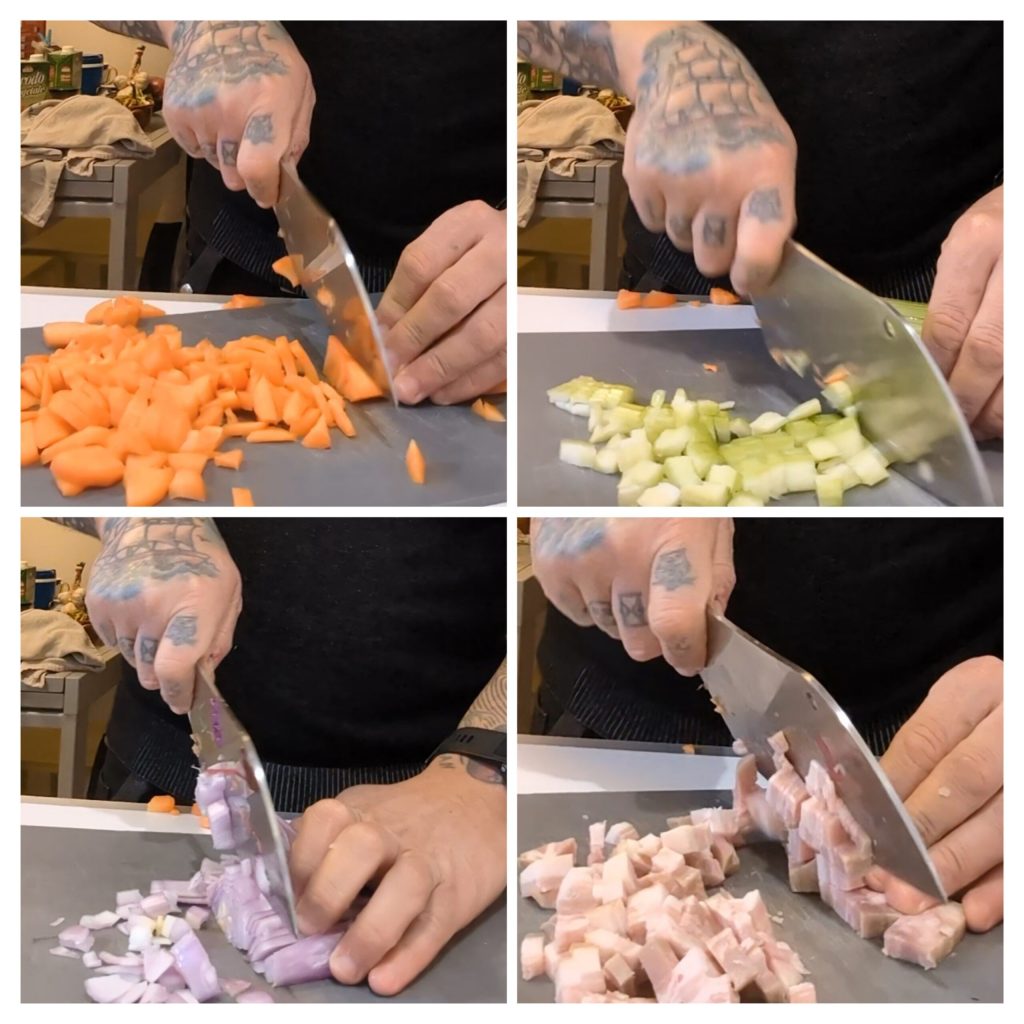
Then, for the recipe, I used a terracotta pot and melted the butter along with the sage leaves and the rest of the spices, namely the cloves and crushed juniper berries, to release more aroma. Alternatively, you can use the pot you prefer, but I recommend using a terracotta pot, which retains heat better and allows the tripe to cook evenly.
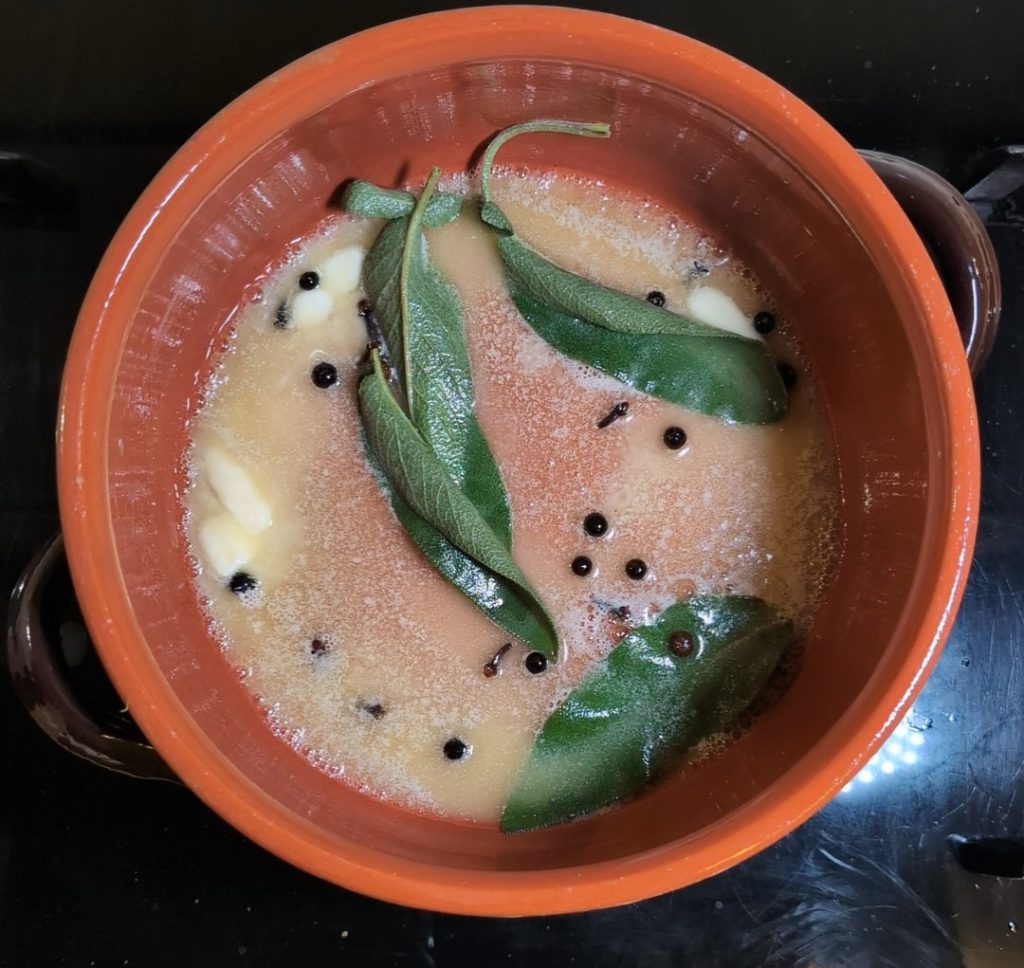
After melting the butter in the terracotta pot and flavoring it with the spices, add the pancetta and brown it gently until it begins to change color.
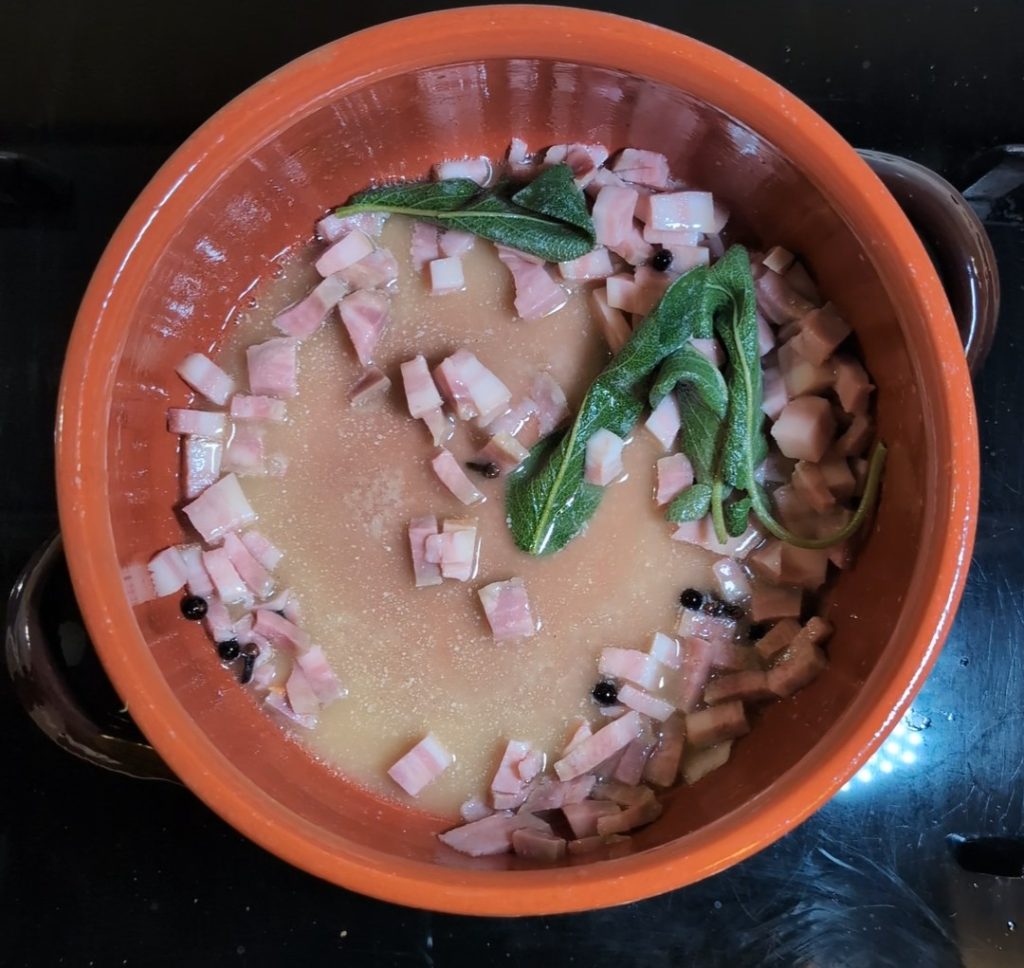
Once the pancetta is browned, add the vegetables and brown them over medium-low heat for about 10 minutes, stirring often, so they cook evenly and become lighter.
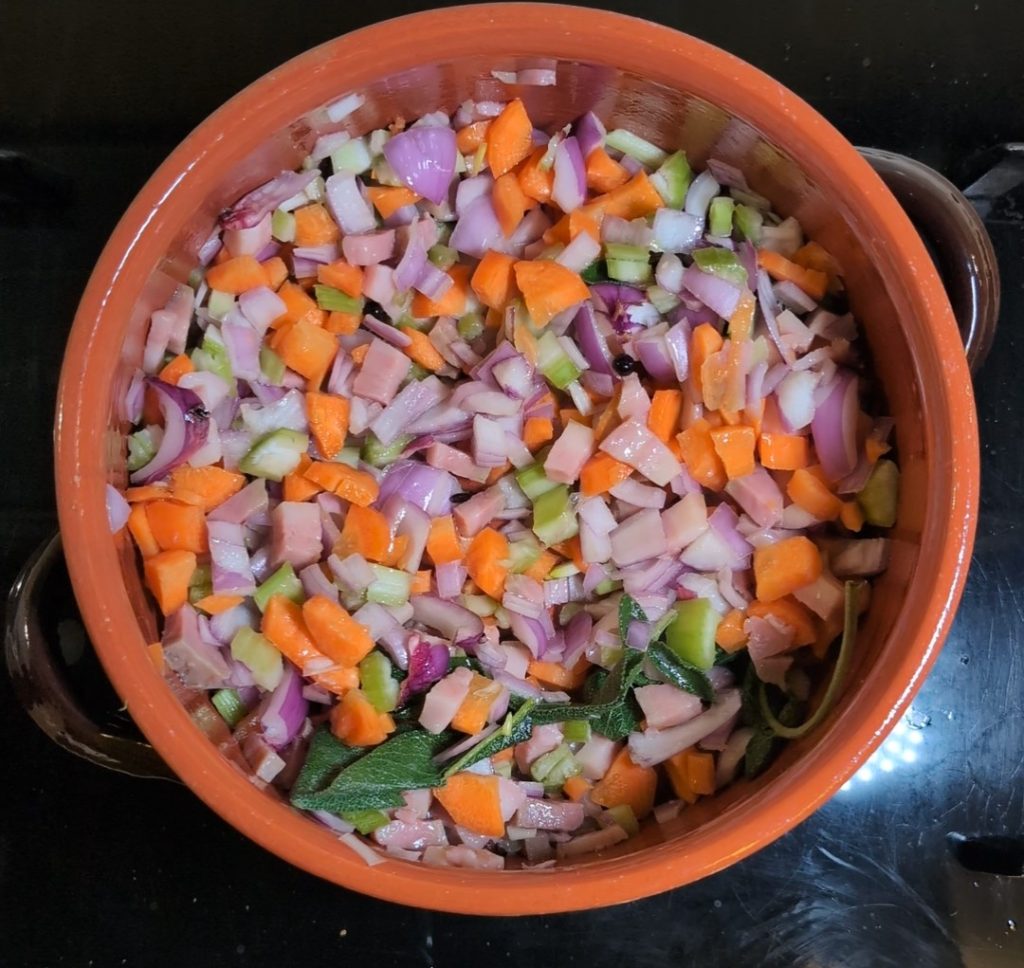
Now, add the tripe, the foiolo, and the broth. Slowly bring to a boil, stirring often to prevent the hot broth from spilling out of the pot, as the mixture is still very voluminous.

After adding the tomato paste, mix it well with the tripe and let it simmer for 2 hours and 30 minutes, with the lid slightly open to let excess steam evaporate and the broth thicken.

Once the cooking time for the tripe is over, the broth will have thickened, and it is time to add the Spanish white beans. Alternatively, you can use canned beans. If you prefer to use dry beans, you need to soak them for at least 12 hours and then boil them for about 40 minutes.
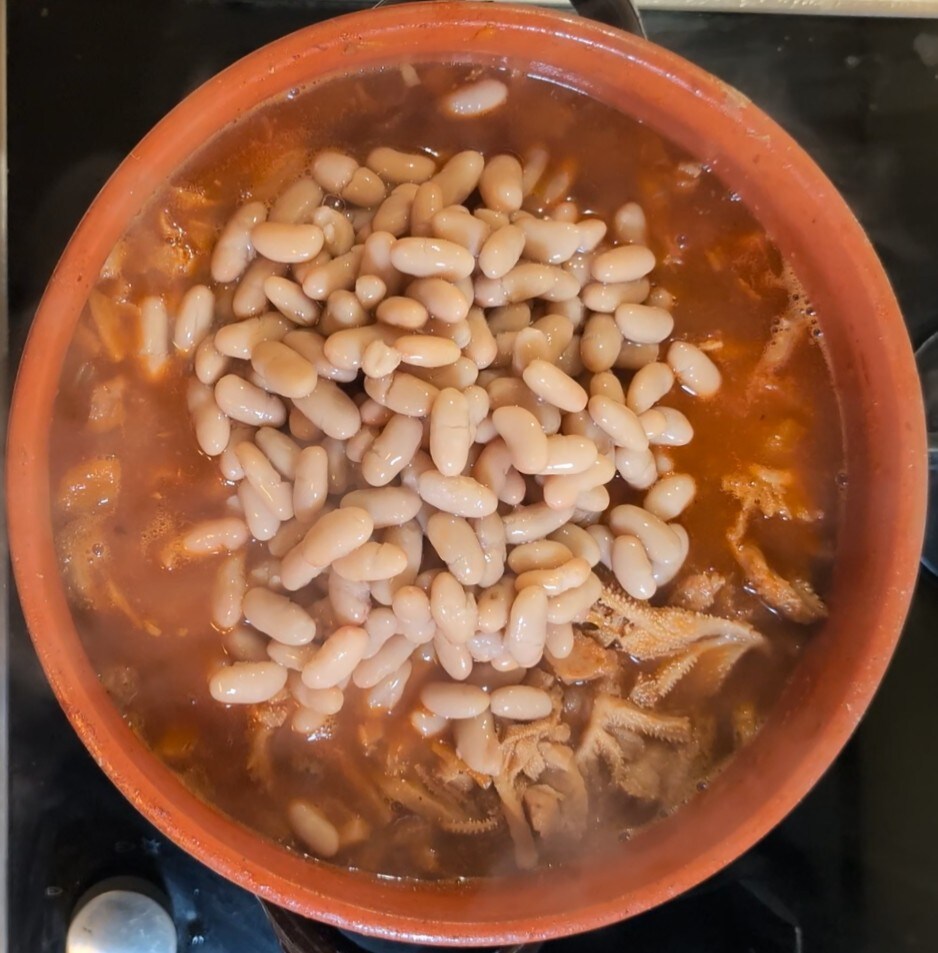
Finally, add the previously boiled beans and cook for another hour, to complete the cooking of Milanese tripe. When the tripe has thickened, add the grated Grana Padano for the last 10 minutes of cooking.
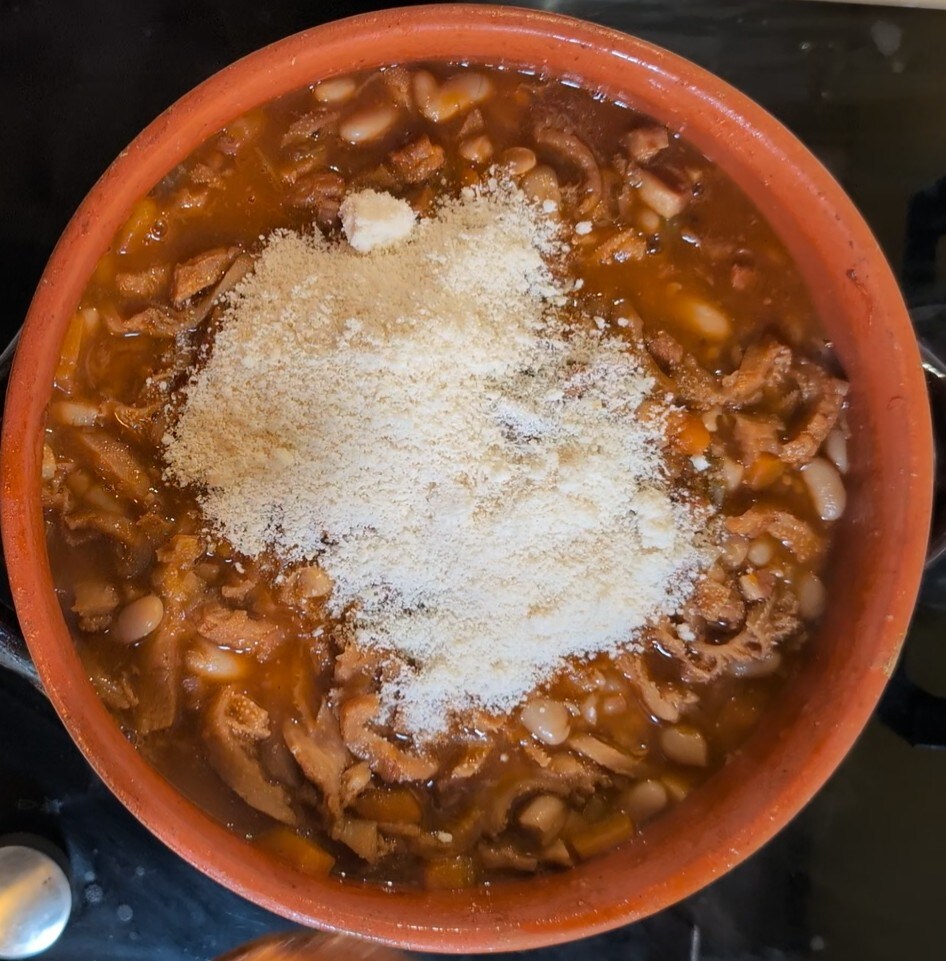
The Milanese tripe is ready! Let it rest in the pot with the lid on for 10-15 minutes before serving, so the flavors can fully develop and give us an authentic taste of Lombard cuisine.
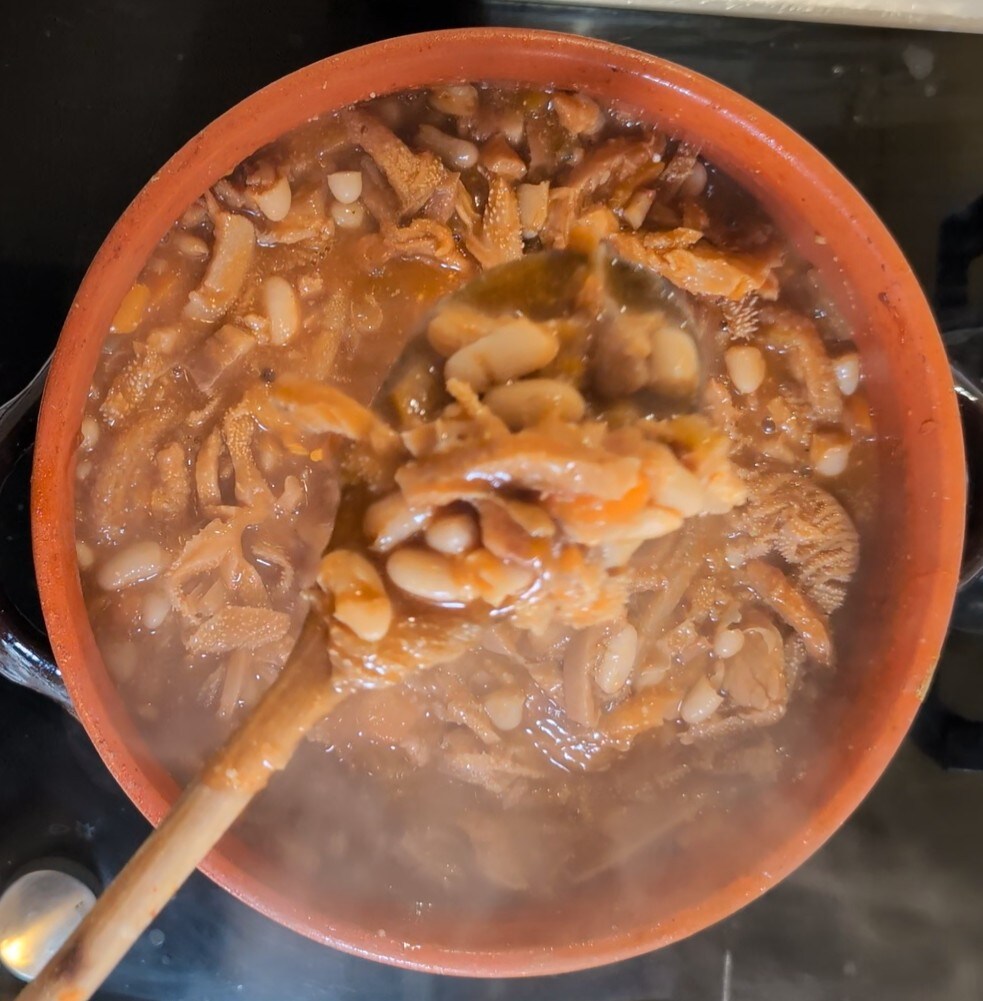
The Milanese tripe, traditional Lombard recipe, is ready to be enjoyed hot and steaming, to fully appreciate its flavor and the aroma released by the heat. If you like, add a sprinkle of grated Grana Padano to the dish once plated.
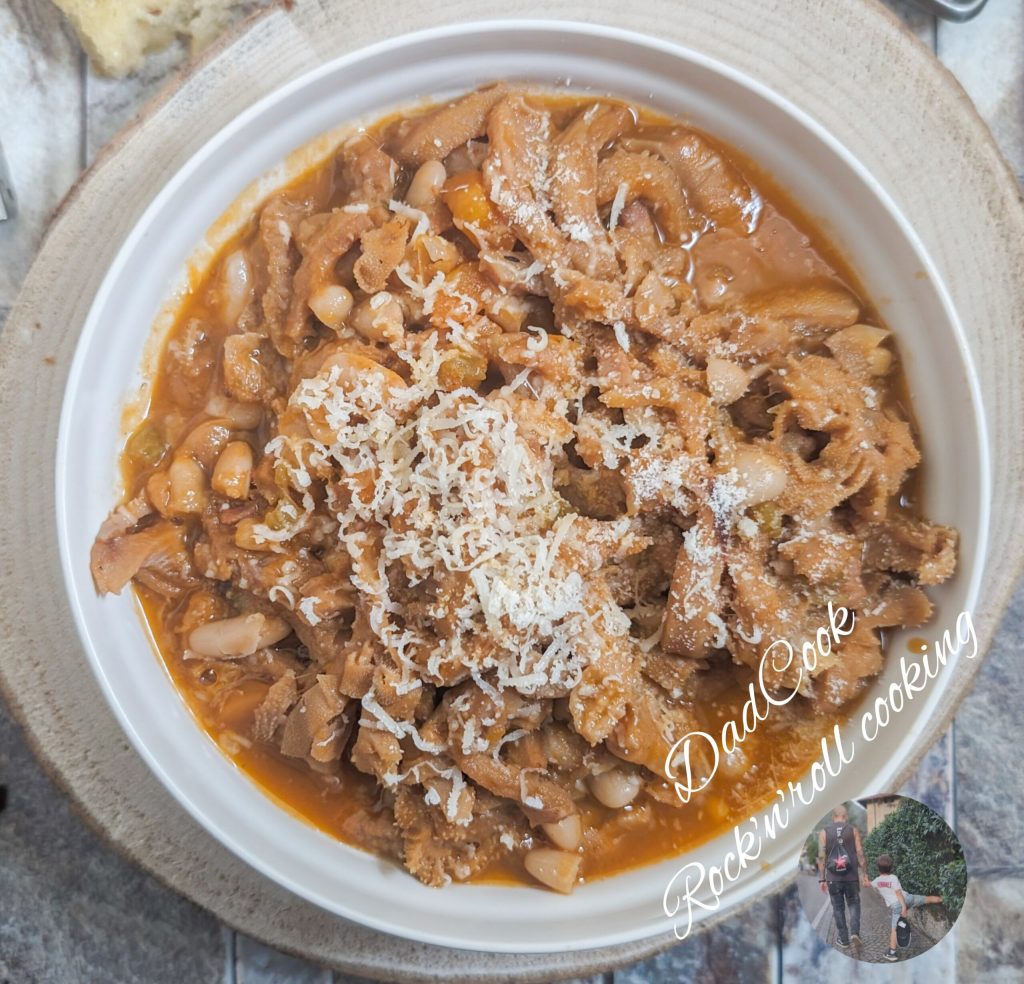
Tips and Suggestions:
Here are some tips on how to serve Milanese tripe:
Serve it hot and steaming, to fully appreciate its flavor and aroma released by the heat.
Plate the tripe in a bowl or deep dish, so the juices can run to the bottom and make it more flavorful.
If you like, you can add a sprinkle of grated Grana Padano, which will give it a touch of creaminess and flavor.
You can accompany the tripe with croutons, to scoop up the juices and enjoy them better.
If you want a touch of color and flavor, you can add some fresh basil leaves to the tripe.
For a more elegant presentation, you can decorate the dish with a few drops of extra virgin olive oil.
If you want to make the tripe lighter, you can serve it with a slice of lemon. Ultimately, the best way to serve Milanese tripe is the one you prefer.
The important thing is that it is hot and steaming, so you can fully appreciate its flavor and aroma.
Storing Leftover Tripe:
Milanese tripe can be stored in the refrigerator for up to 2-3 days in an airtight container. To store it longer, you can freeze it. In this case, the storage duration is about 3 months.
To freeze Milanese tripe, let the dish cool completely, then divide it into portions. Transfer the portions into freezer bags and seal them well. Label the bags with the freezing date.
When you want to consume the frozen tripe, thaw it in the refrigerator for at least 24 hours. Once thawed, you can reheat it in a pan or in the oven.
Here are some tips for storing Milanese tripe in the best way: Let the dish cool completely before storing it, to avoid condensation formation.
Transfer the tripe into an airtight container, to avoid contact with air.
Label the container with the storage date, to keep track of the storage duration.
If you follow these tips, your Milanese tripe will store optimally, and you can enjoy it even in the following days.
If you follow these tips, your Milanese tripe will store optimally, and you can enjoy it even in the following days.
Wine Pairing:
The ideal wine to pair with Milanese tripe is a medium-bodied red wine, with soft tannins and a fruity aroma. This type of wine balances the richness and savoriness of the tripe without overpowering it.
Some wines that pair well with Milanese tripe include:
Barbera d’Asti
Chianti Classico
Sangiovese di Romagna
Rosso di Montalcino
Bardolino
Alternatively, you can opt for a dry and fresh white wine, such as a Fiano di Avellino or a Vermentino di Sardegna. These wines contrast the richness of the tripe, giving it a note of freshness.
Ultimately, the wine to pair with Milanese tripe is a matter of personal preference. However, a medium-bodied red wine is the most classic and safe pairing.
FAQ (Questions and Answers)
What is Foiolo:
Foiolo is the innermost part of the tripe, located near the small intestine. It is a tender and flavorful part, often used to prepare stews, such as Milanese tripe.

